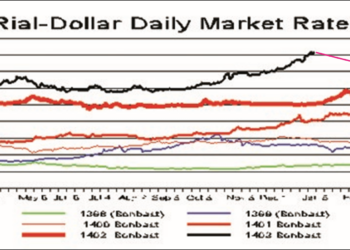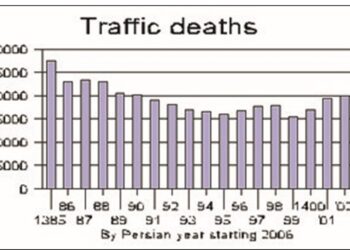October 30, 2020
Fewer than 10 percent of the unemployed in Iran collect unemployment insurance from the government, according to a new study by the Ministry of Labor.
Iranian law says a person is eligible for unemployment insurance if he or she loses a job “for reasons other than his or her own fault.” That is the same standard used in the United States. It means that someone who quits a job doesn’t qualify. But in Iran, the law makes it almost impossible to fire someone, so more than 90 percent of workers are hired under short-term contracts of one, three or six months. If a worker is not re-hired when the contract expires, that worker doesn’t qualify for unemployment compensation.
The Labor Ministry report said that for the last Persian year only 8.6 percent of those who were unemployed during the year ever got unemployment compensation. That includes people who recently left school and never got a job in the first place. When they are excluded, only 15 percent of those who had held a job before becoming jobless received unemployment benefits, making the program irrelevant for most Iranians.
Iran’s Unemployment Insurance Fund is financed by employers who pay into it 3 percent of the total salary and benefits paid their employees who are subject to Iran’s Labor Law and Social Security Law.
In the year ending in March 2020, the average monthly payment from the fund was nearly 27 million rials (about $200 at the average exchange rate in the last Persian year). That was 1.8 times the minimum wage.
The report says that more than 70 percent of those receiving unemployment benefits only got a new job when they had exhausted their benefits—suggesting they didn’t look for a job until then.
According to Article 7 of Iran’s Unemployment Insurance Law, the total duration of the payment is 36 months for single persons and 50 months for those with dependents.
The minimum benefit is 55 percent of average earnings in the previous 90 days increased by 10 percent for each of the first four dependents. The total benefit should not be less than the minimum wage, or exceed 80 percent of the average earnings of the worker in the 90 days before he lost his job.
The Statistical Center of Iran’s latest report on the country’s labor market shows Iran’s unemployment rate, the proportion of jobless population aged 15 and above, stood at 9.8 percent in the first quarter of the current Iranian year (March 20-June 20), indicating a 1.1 percentage point decline compared with the same period of last year. That means Iran’s unemployment rate, if it is to be believed, fell in the middle of the coronavirus epidemic, going in the opposite direction from every other country in the world.














